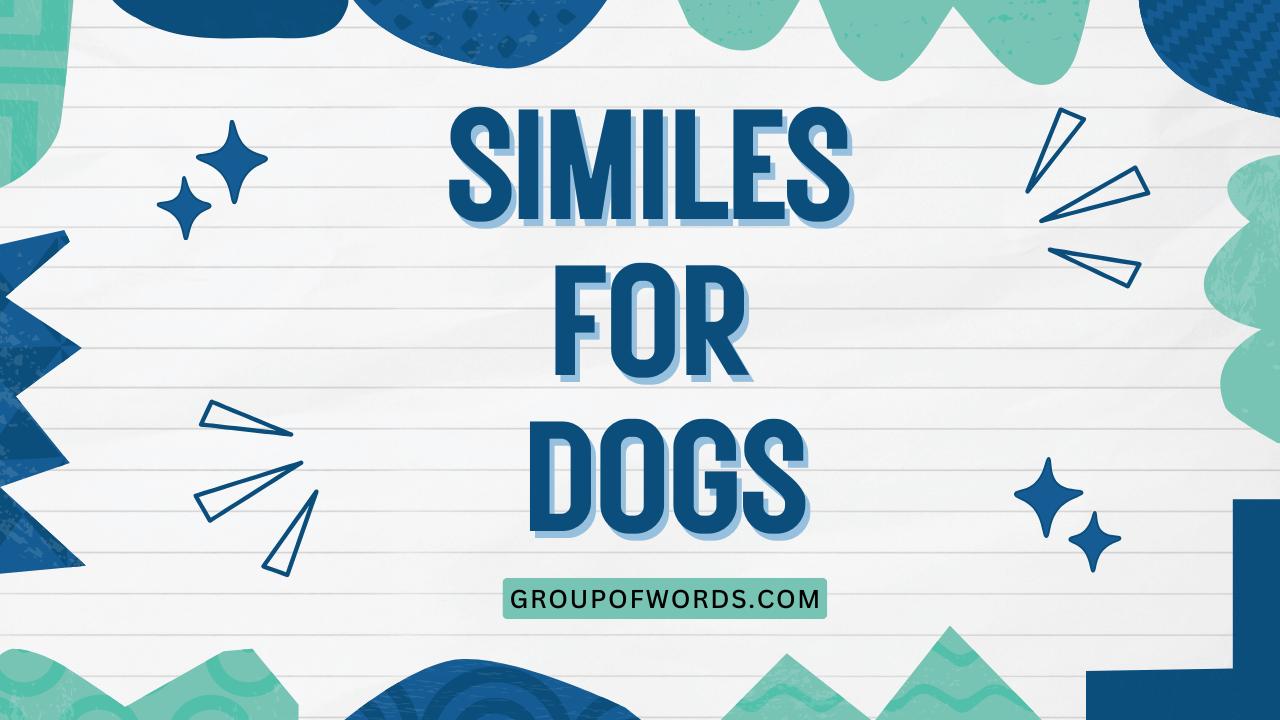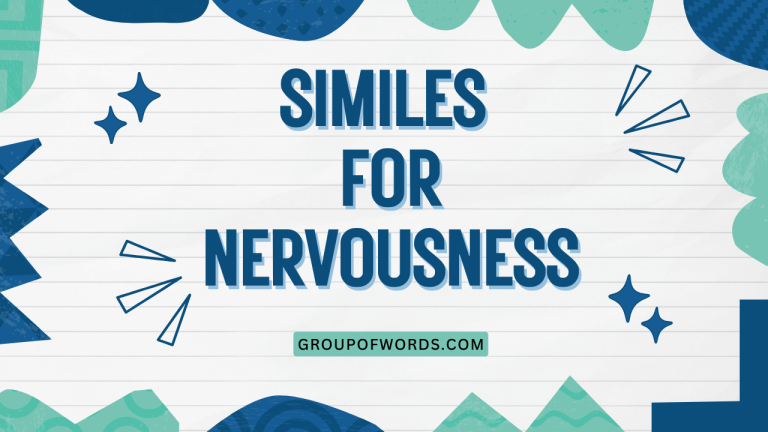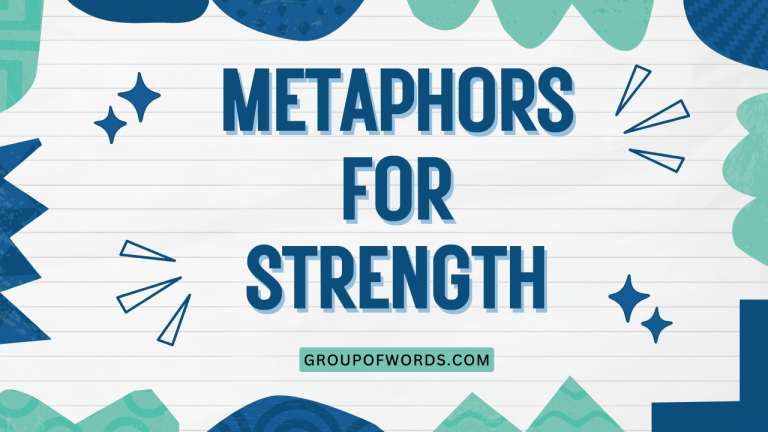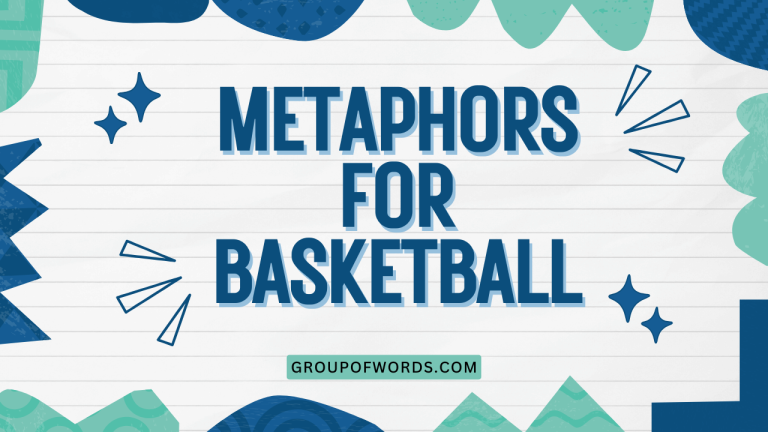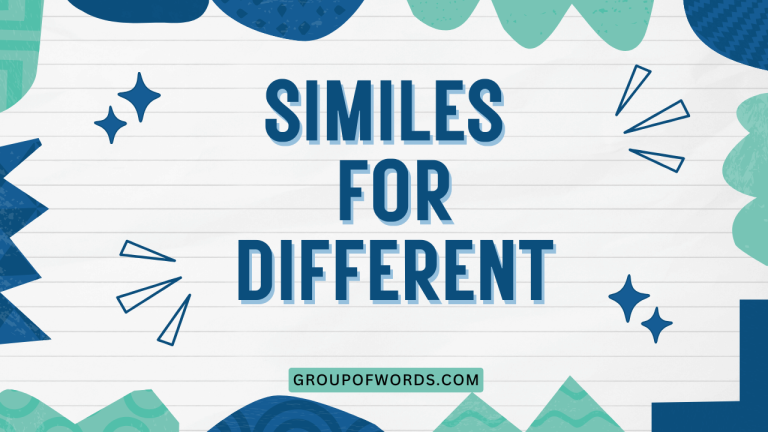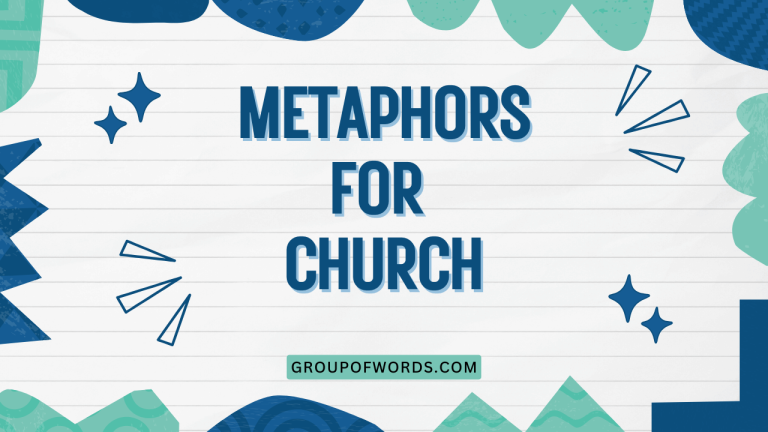Similes for Dogs: A Comprehensive Guide to Canine Comparisons
Similes are a powerful tool in the English language, allowing us to draw vivid comparisons between different subjects. When it comes to describing our beloved canine companions, similes can bring their unique personalities and behaviors to life.
This article explores the fascinating world of similes for dogs, providing a comprehensive guide to understanding their structure, usage, and impact. Whether you’re a language enthusiast, a creative writer, or simply a dog lover, this guide will enhance your ability to express the essence of dogs through descriptive language.
It will benefit anyone looking to improve their writing skills, deepen their understanding of similes, and find creative ways to describe dogs.
Table of Contents
- Introduction
- What is a Simile?
- Structural Breakdown of Similes
- Types of Dog Similes
- Examples of Similes for Dogs
- Usage Rules for Similes
- Common Mistakes with Similes
- Practice Exercises
- Advanced Topics in Similes
- Frequently Asked Questions
- Conclusion
What is a Simile?
A simile is a figure of speech that directly compares two different things using the words “like” or “as.” Its primary function is to create a vivid and relatable image in the reader’s mind by highlighting similarities between the two subjects being compared. Similes are a type of figurative language, meaning they are not meant to be taken literally.
Instead, they add color, depth, and emphasis to writing. Understanding similes is crucial for effective communication, creative writing, and literary analysis.
In essence, a simile functions as a bridge, connecting the known with the unknown or the abstract with the concrete. By drawing a parallel between two seemingly disparate entities, similes can simplify complex ideas, evoke emotions, and enhance the overall impact of a message.
They appear in everyday conversation, literature, poetry, and various forms of creative expression.
Structural Breakdown of Similes
The basic structure of a simile includes three key elements: the subject being described, the linking word (“like” or “as”), and the object of comparison. The subject is the thing you are trying to describe, and the object of comparison is something that shares a similar quality or characteristic with the subject. The linking word explicitly indicates that a comparison is being made.
For example, in the simile “The dog runs like the wind,” the subject is “dog,” the linking word is “like,” and the object of comparison is “wind.” This structure clearly establishes a comparison between the dog’s running speed and the speed of the wind. This simple framework allows for a wide range of creative and descriptive expressions.
Here is a breakdown:
- Subject: The noun or pronoun being described.
- Linking Word: “Like” or “As.”
- Object of Comparison: The noun or pronoun to which the subject is being compared.
Types of Dog Similes
Similes for dogs can be categorized based on the aspect of the dog being described. These categories include behavioral similes, physical similes, and personality similes.
Each type focuses on different characteristics, allowing for a comprehensive and nuanced portrayal of dogs.
Behavioral Similes
Behavioral similes describe a dog’s actions or habits. They often focus on how a dog moves, plays, eats, or interacts with its environment.
These similes provide insight into a dog’s typical conduct and activities.
Physical Similes
Physical similes describe a dog’s appearance or physical attributes. They may focus on size, color, texture, or other noticeable features.
These similes help create a visual image of the dog.
Personality Similes
Personality similes describe a dog’s temperament or character traits. They often focus on qualities like loyalty, friendliness, intelligence, or playfulness.
These similes help convey the dog’s unique disposition.
Examples of Similes for Dogs
The following tables provide a variety of examples of similes for dogs, categorized by the aspect of the dog being described. These examples illustrate the diverse ways in which similes can be used to create vivid and descriptive language.
Behavioral Examples
This table includes similes that compare a dog’s actions and habits to other things, creating a vivid picture of their behavior.
| Simile | Explanation |
|---|---|
| He eats like a wolf. | Describes a dog’s voracious appetite. |
| She sleeps like a log. | Describes a dog’s deep and undisturbed sleep. |
| He barks like a foghorn. | Describes a dog’s loud and booming bark. |
| She plays fetch like a machine. | Describes a dog’s tireless enthusiasm for fetching. |
| He follows me like a shadow. | Describes a dog’s constant and unwavering loyalty. |
| She begs for treats like a professional. | Describes a dog’s skilled and insistent begging. |
| He digs in the yard like a badger. | Describes a dog’s persistent digging behavior. |
| She greets me at the door like a celebrity. | Describes a dog’s enthusiastic and welcoming greeting. |
| He chews on his toys like a beaver. | Describes a dog’s dedicated chewing habits. |
| She runs through the park like a deer. | Describes a dog’s graceful and swift running. |
| He whimpers like a baby. | Describes a dog’s soft and plaintive whimpering. |
| She jumps for joy like a kangaroo. | Describes a dog’s energetic and bouncy jumping. |
| He sniffs around like a detective. | Describes a dog’s investigative sniffing behavior. |
| She watches the squirrels like a hawk. | Describes a dog’s focused and intense observation. |
| He guards the house like a soldier. | Describes a dog’s protective and vigilant guarding. |
| She herds the children like a sheepdog. | Describes a dog’s natural herding instincts. |
| He scratches behind his ear like a little kid. | Describes a dog’s human-like scratching behavior. |
| She pants like a steam engine. | Describes a dog’s heavy and labored panting. |
| He howls at the moon like a wolf. | Describes a dog’s primal and mournful howling. |
| She rolls in the grass like a child. | Describes a dog’s playful and carefree rolling. |
| He growls like a bear. | Describes a dog’s deep and menacing growl. |
| She drinks water like a camel. | Describes a dog’s infrequent but large water consumption. |
| He sheds fur like a snowstorm. | Describes a dog’s heavy shedding. |
Physical Examples
This table presents similes that describe a dog’s physical attributes, helping to create a vivid image of their appearance.
| Simile | Explanation |
|---|---|
| His fur is as soft as velvet. | Describes the smoothness and softness of a dog’s fur. |
| Her eyes are like shining stars. | Describes the brightness and sparkle of a dog’s eyes. |
| His tail wags like a metronome. | Describes the rhythmic and consistent wagging of a dog’s tail. |
| Her paws are as big as pancakes. | Describes the large size of a dog’s paws. |
| His ears are like satellite dishes. | Describes the large and attentive ears of a dog. |
| Her nose is as cold as ice. | Describes the cool temperature of a dog’s nose. |
| His teeth are like pearls. | Describes the whiteness and shine of a dog’s teeth. |
| Her coat is as black as night. | Describes the deep and dark color of a dog’s coat. |
| His legs are like springs. | Describes the bouncy and energetic legs of a dog. |
| Her fur is as white as snow. | Describes the pure and bright color of a dog’s fur. |
| His bark is as deep as a well. | Describes the resonant and profound sound of a dog’s bark. |
| Her tongue is like sandpaper. | Describes the rough texture of a dog’s tongue. |
| His body is as long as a loaf of bread. | Describes the elongated shape of a dog’s body. |
| Her tail is as bushy as a squirrel’s. | Describes the full and fluffy tail of a dog. |
| His paws are as muddy as a swamp. | Describes the dirty and soiled paws of a dog. |
| Her eyes are as brown as chocolate. | Describes the rich and warm color of a dog’s eyes. |
| His fur is as thick as a blanket. | Describes the dense and insulating fur of a dog. |
| Her claws are as sharp as needles. | Describes the pointed and piercing claws of a dog. |
| His nose is as wet as a raindrop. | Describes the moist and dewy nose of a dog. |
| Her ears are as floppy as rags. | Describes the loose and dangling ears of a dog. |
| His fur is as tangled as yarn. | Describes the matted and knotted fur of a dog. |
| Her tail is as short as a nub. | Describes the small and stubby tail of a dog. |
| His legs are as sturdy as tree trunks. | Describes the strong and robust legs of a dog. |
Personality Examples
This table provides similes that describe a dog’s personality traits, helping to convey their unique character and temperament.
| Simile | Explanation |
|---|---|
| He is as loyal as a friend. | Describes a dog’s unwavering loyalty and devotion. |
| She is as playful as a puppy. | Describes a dog’s energetic and joyful playfulness. |
| He is as brave as a lion. | Describes a dog’s courageous and fearless nature. |
| She is as gentle as a lamb. | Describes a dog’s kind and tender demeanor. |
| He is as smart as a whip. | Describes a dog’s quick intelligence and cleverness. |
| She is as stubborn as a mule. | Describes a dog’s persistent and unyielding nature. |
| He is as friendly as a golden retriever. | Describes a dog’s sociable and affable personality. |
| She is as protective as a mother bear. | Describes a dog’s fiercely protective instincts. |
| He is as curious as a cat. | Describes a dog’s inquisitive and exploratory nature. |
| She is as calm as a monk. | Describes a dog’s peaceful and serene demeanor. |
| He is as energetic as a hummingbird. | Describes a dog’s boundless energy and enthusiasm. |
| She is as sensitive as a flower. | Describes a dog’s delicate and perceptive nature. |
| He is as goofy as a clown. | Describes a dog’s silly and amusing behavior. |
| She is as patient as a saint. | Describes a dog’s tolerant and forbearing nature. |
| He is as determined as a marathon runner. | Describes a dog’s resolute and persistent attitude. |
| She is as cuddly as a teddy bear. | Describes a dog’s affectionate and huggable nature. |
| He is as alert as a watchdog. | Describes a dog’s vigilant and watchful behavior. |
| She is as trusting as a child. | Describes a dog’s innocent and naive nature. |
| He is as mischievous as a gremlin. | Describes a dog’s playful and naughty behavior. |
| She is as comforting as a warm blanket. | Describes a dog’s soothing and reassuring presence. |
| He is as regal as a king. | Describes a dog’s dignified and majestic demeanor. |
| She is as joyful as a song. | Describes a dog’s happy and uplifting presence. |
| He is as dependable as the sunrise. | Describes a dog’s reliable and constant nature. |
Appearance Examples
This table highlights similes that focus on the visual aspects of a dog, providing a clear picture of their look.
| Simile | Explanation |
|---|---|
| His coat shines like polished ebony. | Describes a dog’s dark, glossy fur. |
| Her spots are arranged like a constellation. | Describes the unique pattern of spots on a dog. |
| His eyes gleam like emeralds. | Describes a dog’s bright green eyes. |
| Her tail curls like a question mark. | Describes the curved shape of a dog’s tail. |
| His face is wrinkled like a prune. | Describes a dog’s heavily wrinkled face. |
| Her ears stand tall like vigilant sentinels. | Describes a dog’s upright and attentive ears. |
| His teeth are as white as fresh snow. | Describes the bright white color of a dog’s teeth. |
| Her fur is as thick as a woolly mammoth’s. | Describes the dense and heavy fur of a dog. |
| His paws are as wide as saucers. | Describes the broad size of a dog’s paws. |
| Her build is as sleek as a greyhound’s. | Describes the streamlined and athletic physique of a dog. |
| His stance is as proud as a thoroughbred. | Describes a dog’s confident and noble posture. |
| Her gait is as smooth as flowing water. | Describes a dog’s graceful and fluid movement. |
| His presence is as striking as a mountain range. | Describes a dog’s impressive and commanding appearance. |
| Her coloring is as unique as a fingerprint. | Describes the distinctive and individual coloring of a dog. |
| His markings are as intricate as a tapestry. | Describes the complex and detailed markings on a dog. |
| Her form is as delicate as a porcelain doll. | Describes a dog’s fragile and refined appearance. |
| His size is as imposing as a small pony. | Describes a dog’s large and substantial size. |
| Her features are as expressive as a human’s. | Describes a dog’s animated and communicative features. |
| His gaze is as piercing as a hawk’s. | Describes a dog’s intense and penetrating stare. |
| Her silhouette is as elegant as a swan’s. | Describes a dog’s graceful and refined outline. |
Movement Examples
This table presents similes that describe how a dog moves, bringing their actions to life.
| Simile | Explanation |
|---|---|
| He leaps like a salmon upstream. | Describes a dog’s powerful and determined jumps. |
| She bounds like a gazelle across the field. | Describes a dog’s graceful and agile running. |
| He trots like a pony in a parade. | Describes a dog’s proud and rhythmic trotting. |
| She dashes like a sprinter off the block. | Describes a dog’s quick and explosive bursts of speed. |
| He creeps like a shadow in the night. | Describes a dog’s stealthy and quiet movements. |
| She waddles like a duck on land. | Describes a dog’s awkward and swaying walk. |
| He pounces like a tiger on its prey. | Describes a dog’s sudden and forceful attack. |
| She floats like a cloud on the breeze. | Describes a dog’s light and effortless movements. |
| He stomps like an elephant through the mud. | Describes a dog’s heavy and clumsy steps. |
| She glides like a skater on the ice. | Describes a dog’s smooth and fluid movements. |
| He rolls like a tumbleweed in the wind. | Describes a dog’s uncontrolled and erratic rolling. |
| She skips like a child through the park. | Describes a dog’s playful and bouncy movements. |
| He struts like a peacock showing off. | Describes a dog’s proud and showy walk. |
| She whirls like a dervish in a dance. | Describes a dog’s rapid and spinning movements. |
| He zigzags like a bee in flight. | Describes a dog’s erratic and unpredictable path. |
| She crawls like a commando under cover. | Describes a dog’s low and careful movements. |
| He plunges like a diver into the water. | Describes a dog’s quick and deep dive. |
| She bounces like a rubber ball in the yard. | Describes a dog’s energetic and springy movements. |
| He scurries like a mouse across the floor. | Describes a dog’s quick and hurried movements. |
| She prances like a show horse in the ring. | Describes a dog’s elegant and stylized movements. |
Usage Rules for Similes
When using similes, it’s important to ensure clarity, relevance, and originality. The comparison should be easily understood and should enhance the description rather than confuse it.
The object of comparison should share a clear and recognizable similarity with the subject. Strive to create fresh and imaginative similes that avoid clichés.
Key Guidelines:
- Clarity: The comparison should be easy to understand.
- Relevance: The object of comparison should share a meaningful similarity with the subject.
- Originality: Avoid overused or cliché similes.
- Context: Ensure the simile fits the tone and style of your writing.
Exceptions and Special Cases:
- Sometimes, a simile can be effective even if the comparison is slightly unexpected, as long as it creates a striking image or evokes a particular emotion.
- In poetry and creative writing, more abstract or metaphorical similes can be used, but they should still be grounded in some level of shared characteristic.
Common Mistakes with Similes
One common mistake is confusing similes with metaphors. While both are figures of speech that make comparisons, similes use “like” or “as,” whereas metaphors state that one thing is another. Another mistake is using clichés that have lost their impact through overuse. Additionally, ensure that the comparison is logical and relevant to avoid confusing the reader.
Here are some examples of common mistakes:
| Incorrect | Correct | Explanation |
|---|---|---|
| The dog is a wolf. | The dog eats like a wolf. | Confusing a metaphor with a simile. |
| He is as happy as can be. | He is as happy as a dog with a bone. | Using a cliché instead of a fresh simile. |
| She runs like a refrigerator. | She runs like the wind. | Using an illogical comparison. |
Practice Exercises
Test your understanding of similes with these exercises. Fill in the blanks to complete the similes, or rewrite the sentences using similes.
Exercise 1: Fill in the Blanks
| Question | Answer |
|---|---|
| 1. The dog’s fur was as soft as _____. | velvet |
| 2. He barked like a _____. | foghorn |
| 3. She runs as fast as _____. | lightning |
| 4. His loyalty is like _____. | a shadow |
| 5. She eats like a _____. | pig |
| 6. The puppy is as playful as _____. | a kitten |
| 7. He sleeps like _____. | a log |
| 8. Her eyes shone like _____. | stars |
| 9. He is as brave as a _____. | lion |
| 10. She is as gentle as _____. | a lamb |
Exercise 2: Rewrite the Sentences Using Similes
| Question | Answer |
|---|---|
| 1. The dog is very fast. | The dog is as fast as a race car. |
| 2. The puppy is very energetic. | The puppy is as energetic as a hummingbird. |
| 3. The old dog is very wise. | The old dog is as wise as an owl. |
| 4. The puppy’s fur is very soft. | The puppy’s fur is as soft as a cloud. |
| 5. The dog barks loudly. | The dog barks like a thunderclap. |
| 6. The dog is extremely loyal. | The dog is as loyal as a knight. |
| 7. The puppy is very playful. | The puppy is as playful as a dolphin. |
| 8. The dog sleeps soundly. | The dog sleeps like the dead. |
| 9. The dog’s eyes are bright. | The dog’s eyes are like shining beacons. |
| 10. The dog is very brave. | The dog is as brave as a gladiator. |
Exercise 3: Create Your Own Similes
Create your own similes to describe the following aspects of a dog:
- The way a dog wags its tail.
- The sound of a dog snoring.
- The feeling of a dog’s wet nose.
- The appearance of a dog’s paws.
- The personality of a playful dog.
Advanced Topics in Similes
For advanced learners, exploring the nuances of similes can involve examining their use in literature, analyzing their cultural significance, and experimenting with more complex and abstract comparisons. Consider how similes contribute to the overall tone and theme of a piece of writing, and how different cultures may use similes in unique ways.
Here are some advanced techniques to consider:
- Extended Similes: Develop a single simile over multiple sentences or paragraphs.
- Subverted Similes: Create a simile that initially seems straightforward but then takes an unexpected turn.
- Cultural Similes: Use similes that draw on specific cultural references or traditions.
Frequently Asked Questions
Here are some frequently asked questions about similes:
- What is the difference between a simile and a metaphor?
A simile uses “like” or “as” to compare two things, while a metaphor states that one thing is another. Similes are explicit comparisons, while metaphors are implicit.
- Why are similes useful in writing?
Similes add vividness, clarity, and emphasis to writing. They help readers create mental images and understand complex ideas by relating them to familiar concepts.
- How can I avoid using clichés in my similes?
Think creatively and try to find unique and unexpected comparisons. Consider the specific qualities you want to highlight and brainstorm objects or concepts that share those qualities in a fresh way.
- Can a simile be too complex?
Yes, if the comparison is too obscure or convoluted, it can confuse the reader and detract from the writing. Aim for clarity and relevance in your similes.
- Are similes only used in creative writing?
No, similes can be used in various forms of writing, including informative and persuasive pieces. They can help explain complex topics and make arguments more compelling.
- How do I choose the best object of comparison for a simile?
Choose an object that shares a clear and recognizable similarity with the subject you are describing. Consider the specific qualities you want to emphasize and select an object that embodies those qualities.
- What role do similes play in poetry?
Similes are a fundamental tool in poetry, allowing poets to create rich imagery, evoke emotions, and convey deeper meanings through comparative language. They contribute to the musicality and artistic expression of poetry.
- How can similes help in understanding a text?
Similes provide context and clarity by relating unfamiliar concepts to familiar ones. They help readers grasp the essence of a subject by highlighting its similarities to something they already understand.
Conclusion
Similes are a powerful tool for adding color and depth to your writing, particularly when describing the unique characteristics of dogs. By understanding the structure, types, and usage rules of similes, you can create vivid and memorable descriptions that capture the essence of your canine companions.
Remember to focus on clarity, relevance, and originality to craft similes that resonate with your audience and enhance your writing.
Continue practicing and experimenting with different similes to refine your skills and develop your own unique voice. Pay attention to the similes used by other writers and analyze how they contribute to the overall impact of their work.
With dedication and creativity, you can master the art of using similes to bring your descriptions of dogs to life.
